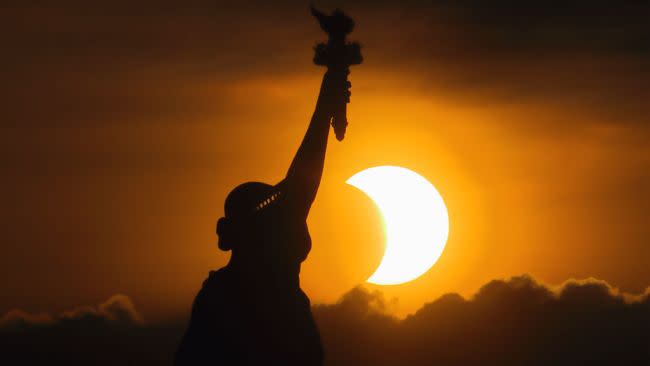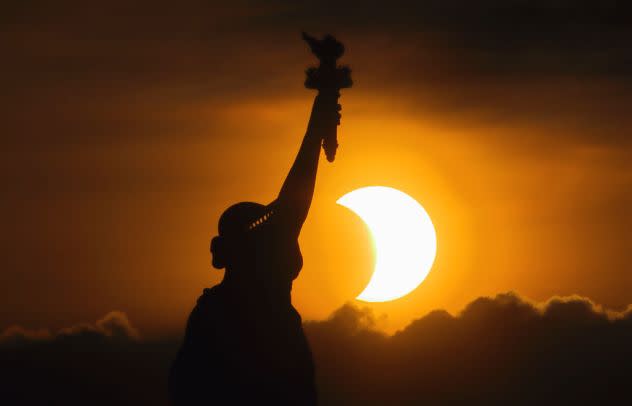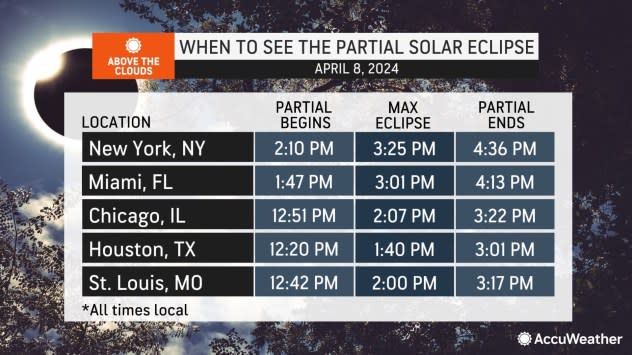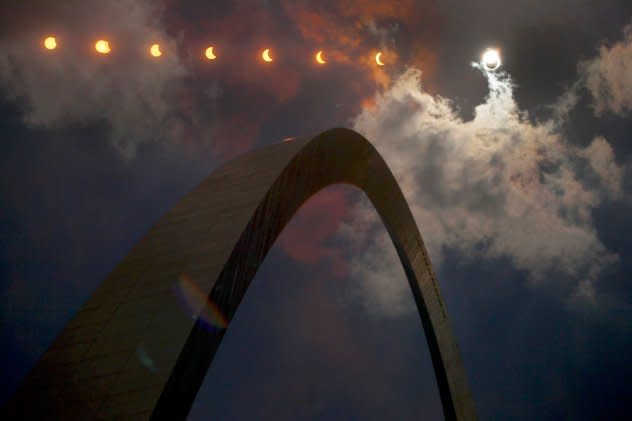When will the solar eclipse be visible in NYC, Chicago and Miami?
A solar eclipse will send North America into darkness on April 8, but what it will look like and what time it will take place will depend on your exact location. A breathtaking total solar eclipse will only be visible from a small area, called the path of totality, while a partial solar eclipse will occur over nearly the rest of the continent, cloud permitting.
Eclipse glasses will be a necessity as looking at the sun without the proper protection can cause serious eye damage.
April's solar eclipse will last for over two hours in New York City, beginning at 2:10 p.m. EDT and ending at 4:36 p.m. EDT. The best time to look will be at 3:25 p.m. EDT, when 91% of the sun will be blocked out by the moon.
 |
The sun rises next to the Statue of Liberty during an annular eclipse on June 10, 2021 in New York City. (Photo by Gary Hershorn/Getty Images) |
While the total eclipse won't be visible in Florida, skywatchers across the state can still experience a partial solar eclipse on April 8. In Miami, the partial eclipse will start at 1:47 p.m. EDT and end at 4:13 p.m. EDT. During the height of the eclipse at 3:01 p.m. EDT, the moon will cover 55% of the face of the sun.
The sky will begin darkening in Chicago at 12:51 p.m. CDT, with the peak of the eclipse occurring at 2:07 p.m. CDT, when the moon will block out 94% of the sun. The partial solar eclipse will continue until 3:22 p.m. CDT.
 |
Houston is outside the path of totality, but people in the city for the event will still see a partial solar eclipse. The moon will begin to block out the sun at 12:20 p.m. CDT, and at 1:40 p.m. CDT, only a sliver of the sun will be visible in the sky.
The partial solar eclipse in Houston will conclude at 3:01 p.m. CDT.
The upcoming partial solar eclipse in Downtown St. Louis will start at 12:42 p.m. CDT and end at 3:17 p.m. CDT. The best time to look will be at 2 p.m. CDT, when 99% of the sun will be hidden by the moon.
This is a repeat of the 2017 Great American Eclipse when the city was also barely outside of the path of totality.
 |
In this Aug. 21, 2017 multiple exposure photograph, the phases of a partial solar eclipse are seen over the Gateway Arch in St. Louis. It wasn't all doom and gloom in 2017. The year was also filled with awe-inspiring moments that united us and warmed the heart. The first total solar eclipse to cross the U.S. in a generation bought millions together in what some could only describe as a primal experience.(AP Photo/Jeff Roberson File) |
Want next-level safety, ad-free? Unlock advanced, hyperlocal severe weather alerts when you subscribe to Premium+ on the AccuWeather app. AccuWeather Alerts™ are prompted by our expert meteorologists who monitor and analyze dangerous weather risks 24/7 to keep you and your family safer.




